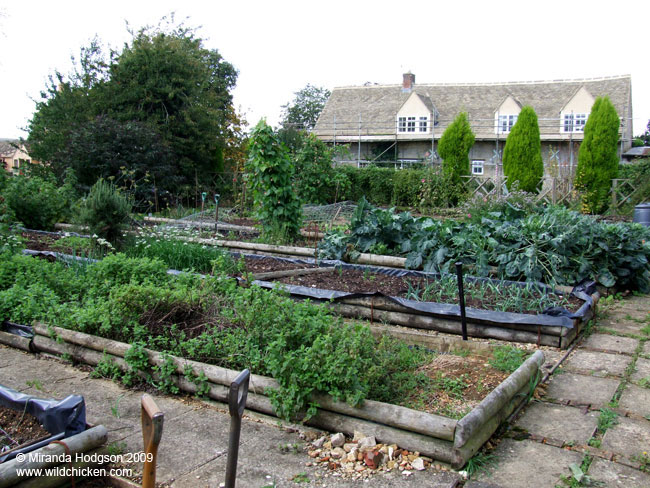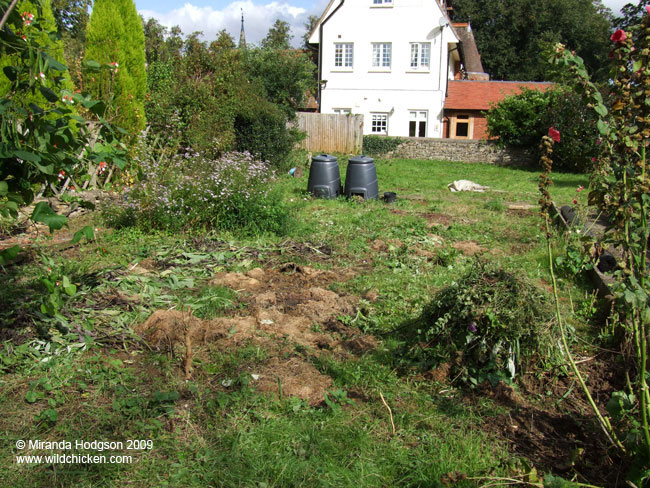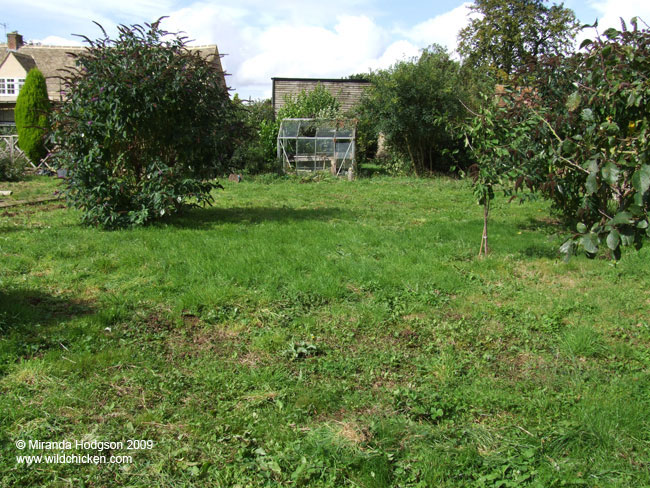September 2008 - Finding the kitchen garden
Time to move on from the smallholding where we’d spent some months putting in a kitchen garden. Time to find a garden of our own, to use as we decide.
We moved north and east of Oxford to a small, unremarkable and extremely pleasant market town, where we tentatively put down roots and started to look for a new garden. An allotment seemed the obvious starting point, but inquiries revealed a two year waiting list, at shortest, which was out of the question. We wanted something far sooner than that.
After a little lateral thinking, but not that much, we got the map out and pinpointed the nearest farms. They had lots of land, so we’d ask them if we could rent a corner to grow our vegetables on. In the end we visited three.
At the first, we were greeted by a young man, who we took to be the son of the house, who told us rather sniffily that land was expensive hereabouts and he wasn’t sure that he could help us. Fine, obviously not the place for us.
On to the next place, a lovely old redbrick farm, tucked away up a narrow leafy lane, with a rambling front garden. The lady farmer brought us into her large kitchen, sat us down at a long wooden table and gave us coffee. She was friendly and inquisitive and seemed interested in our quest to find a bit of ground for growing on, but she’d have to think about it and, of course, discuss the matter with her son, but he was away just then. She took us out to her little orchard where her chickens lived and gave us some delicious apples. We chatted a little about apples and chickens and then bade one another friendly farewell. It was a lovely spot and we could imagine turning the dirt there, but time went by and no decisions were made so, we looked again.
Some thatchers we’d met suggested asking at the farm where they rented a barn for their straw. It was a mile or so from the redbrick farm and had a similar atmosphere – peaceful, overflowing hedgerows full of burgeoning growth. A 15th century farmhouse sat sheltered behind a mass of shrubbery and mature trees. Here we found another lady farmer, clearly irritated to find us at her door. Why hadn’t we phoned first to make an appointment, she asked crossly, and we explained again what we were looking for. ‘Well, you’d better come in’, she said impatiently, and led us indoors.
Once again, we were brought into a large kitchen – like the last one, this one also had two cookers, one gas and the other an aga – and gave us coffee. She was stern with us and wanted to know precisely what we intended; where was our five year plan? We didn’t have one. She was unimpressed, it wouldn’t do. Then she seemed to remember something and softened a little. Now that she thought about it, maybe she could help after all.
She took us outside and led us along a path that ran alongside a huge pond, lush with growth around the edges, where a few moorhens hooted and clucked on the water and there we came to an old, overgrown kitchen garden. Set away from the house, it was sheltered by hedgerows on two sides and the neighbour’s stone wall on another. An old cottage, part of the farm, nestled behind one hedge. Several old apple trees stood in grass by the hedge, heavy with fruit.

Raised beds
This garden wasn’t what we’d initially expected to find when we first went looking; we had been thinking along the lines of half to an acre of plain, open field that we would plan out ourselves; this was a good bit smaller and already partly established. On one side were six raised beds, each 11m long by 1.5m wide, with slab paths running between and around them. There was a larger bed, the same length but some 5.5m wide. This side of the garden was divided from a large area of meadow grass by a slab and brick path.

The big bed
Looking down, a quick investigation revealed clay soil. That and the lushness of the nettles told us that the site had fertile soil and whilst the clay had grit mixed in, there weren’t great lumps of stone to be dealt with.
At one end of the grassy area was a metal framed greenhouse with several panes missing and overgrown with ivy. At the other end were two large sturdy looking compost bays. There was a tap and when you turned it on, water came out – result. We would be able to drive along a track through an adjoining field and come in through the gate in the far hedgerow, leaving the car in the field, so we didn’t have to go through the farmer’s courtyard.

The grassy area
This garden, the lady farmer told us, had been used by her late husband. She had cleared a few little patches, put in some cabbages and leeks here and there, but she was alone now and found it too much to manage by herself. If we wanted to, we could just go ahead and use it and if she could have a few vegetables from time to time, she’d be happy.
We stood and looked around, drinking it in. The place had a good feeling – there was an almost soporific stillness to the atmosphere; the sound of birds cheeping and rustling about in the hedgerows; hooting moorhens; the sun glinting off the rippling surface of the pond; long stems of the weeping willow trees swaying in the gentle breeze and the sleeping garden, waiting to be worked once more. It wasn’t what we’d foreseen, but it was beautiful. We accepted.
© Copyright Miranda Hodgson 2008